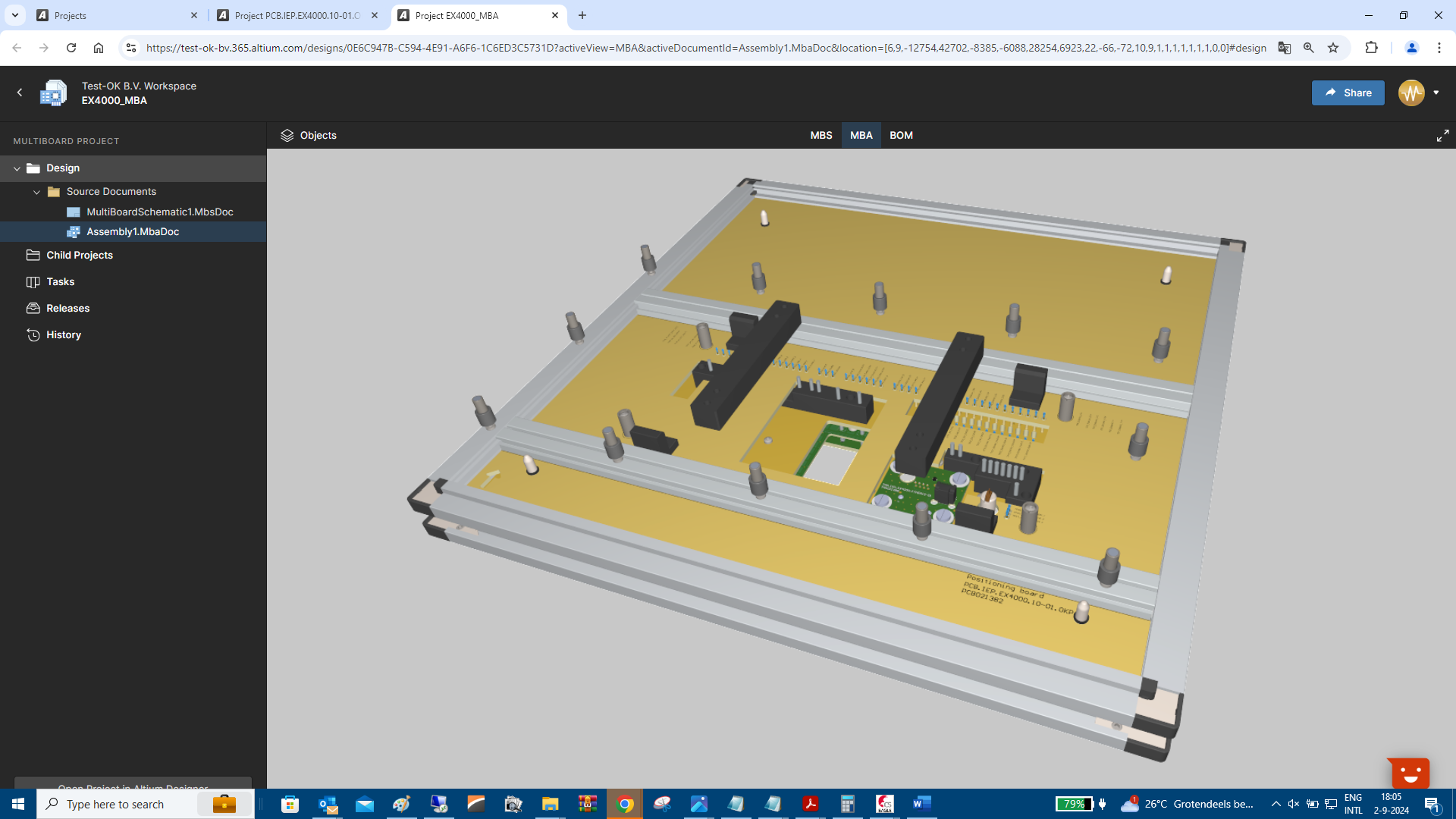
Creating multi-board hardware is commonplace in the electronics industry, but presents a significant engineering challenge to the designer. The capabilities of Altium Multi-board Design now give engineers the tools to interface their hardware in the design environment, ensuring that electrical signals and mechanical connectors are aligned and compatible before boards are ordered.
The TEST-OK Modules consist of 1 or 2 PCBs in frames. In the mutual relationships between the PCBs, not only the passage of electrical signals must be taken into account, but also the height of components (cut-outs) and the attachment of mechanical components (Fast-Lock or center Pins). All risky dependencies that are crucial for the success or failure of a successful test set-up for your PCBA. With TEST-OK's extensive library for Altium Multiboards, these dependencies are now under control and the risk of errors can be reduced to a minimum.
For TEST-OK Modules, which consist of at least 3 combined PCBs, designing in Altium Multi-board Design is therefore the ideal development method. The combined PCBs (3 to 5) of a TEST-OK Module are provided with all mutual relations in order to be able to build a TEST-OK module for your PCBA in a relatively short period of time, with as little technical risk as possible.
TEST-OK offers all standard constructional and electrical components in the TEST-OK library for Altium required for the design and implementation of the 'multi-boards' of a TEST-OK Module. Subsequently, ordering the PCBs for a TEST-OK module is a matter of uploading them into the ordering program of, for example, Eurocircuits.